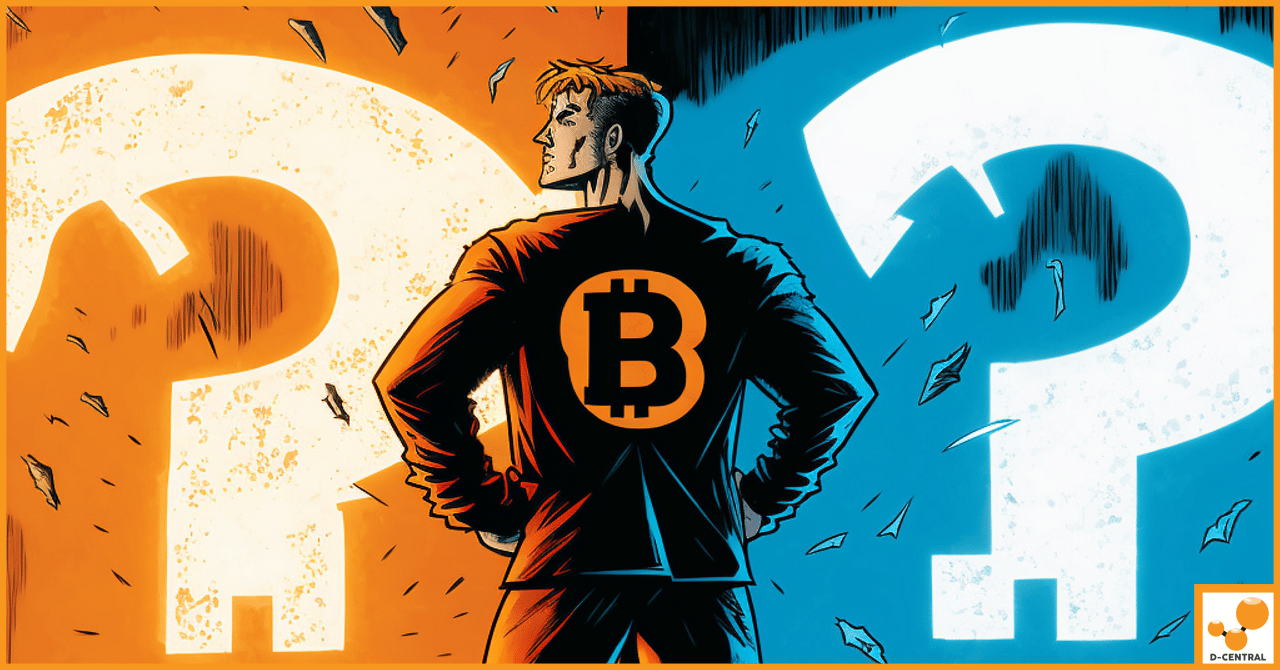
Top Bitcoin Miners for Home Mining in 2024: A Comprehensive Guide
The interest in Bitcoin home mining has seen a significant rise in 2024 as more individuals look to participate in
4479 Desserte Nord Autoroute 440, Laval, QC H7P 6E2

In the world of digital currencies, Bitcoin stands as a pioneering force, having introduced a revolutionary concept that extends far beyond its status as the first cryptocurrency. At the heart of Bitcoin’s innovative design lies a key feature: decentralized consensus. This mechanism is not just a technical cornerstone; it’s the very ethos that underpins Bitcoin’s philosophy and functionality, challenging traditional notions of financial governance and transaction validation.
Decentralized consensus in Bitcoin represents a paradigm shift from the centralized systems we’ve known. Gone are the days when a single authoritative entity, like a bank or a government, controlled financial transactions. Instead, Bitcoin operates on a network of distributed nodes, each playing a crucial role in validating transactions and maintaining the integrity of the entire system. This decentralized approach ensures that no single party can dictate or unduly influence the network, promoting a level of transparency and security unheard of in traditional financial systems.
This article aims to unravel the intricacies of Bitcoin’s decentralized consensus. We’ll delve into the concept’s definition, its critical role in the blockchain technology that underpins Bitcoin, and the specific mechanisms, like Proof-of-Work (PoW), that facilitate this consensus. We’ll also tackle the challenges and risks inherent in decentralized systems, such as vulnerability to certain types of attacks and regulatory hurdles.
Decentralized consensus, a fundamental aspect of Bitcoin, represents a radical departure from traditional centralized financial systems. In its simplest form, it’s a method through which the participants of the Bitcoin network – the nodes – collectively agree on the current state of the blockchain, the ledger that records all Bitcoin transactions. This consensus is crucial as it ensures the integrity and trustworthiness of the Bitcoin network without the need for a central authority like a bank or government.
In technical terms, decentralized consensus in Bitcoin is achieved through a process where multiple nodes validate and confirm each transaction. These nodes, distributed across the globe, work independently but follow the same set of rules, known as the blockchain protocol. When a transaction occurs, it’s broadcasted to the network, and nodes begin the work of verifying its validity based on pre-established criteria. Once verified, transactions are grouped into blocks and added to the blockchain. The key here is that no single node has the authority to decide which transactions are valid; this decision is made collectively by the network.
The concept of decentralized consensus became a tangible reality with the creation of Bitcoin in 2009 by an individual or group known as Satoshi Nakamoto. Bitcoin’s emergence marked the first practical solution to a longstanding problem in digital currencies – the double-spending problem. This problem, where a single digital token could be spent more than once, was traditionally resolved by centralized authorities who kept records of transactions.
Bitcoin, however, introduced a novel solution: a decentralized network where consensus on transactions and their history is reached without a central overseer. This was revolutionary, as it meant that trust in the system was not placed in a single entity but was instead distributed across a network of participants, each acting in their own interest but collectively maintaining the network’s integrity and security.
The introduction of this decentralized approach was not just a technical achievement but also a philosophical statement about the nature of financial systems and the potential for a currency that operates independently of traditional financial institutions. Bitcoin’s decentralized consensus model challenged the status quo, presenting an alternative that offered increased security, reduced risk of censorship, and greater autonomy for its users.
In conclusion, Bitcoin’s decentralized consensus is more than just a technical mechanism; it’s a foundational principle that redefines the concept of trust in financial transactions. By decentralizing the consensus process, Bitcoin has not only provided a secure and transparent way to conduct digital transactions but also paved the way for a new era of financial systems that operate beyond the control of central authorities.
In the realm of blockchain technology, a consensus mechanism is a foundational element that determines how trust and agreement are established in a decentralized environment. Essentially, it’s the process through which all participants of a blockchain network agree on the current state of the digital ledger, ensuring that each transaction is accurate and secure.
Blockchain networks consist of various nodes or participants, each holding a copy of the entire transaction ledger. A consensus mechanism is crucial because it coordinates these nodes to maintain a singular, consistent version of the truth across the network. This is challenging, especially given the absence of a central authority to verify and approve transactions.
There are several types of consensus mechanisms, but they all serve the same purpose: validating transactions, achieving network consensus, and ensuring security and integrity of the blockchain. The most notable ones include Proof of Work (PoW), Proof of Stake (PoS), and Delegated Proof of Stake (DPoS), each with its unique approach to achieving consensus.
In summary, consensus mechanisms are more than just a set of rules for validating transactions. They are the backbone of blockchain technology, enabling decentralized networks to function effectively, securely, and transparently. By ensuring every participant in the network adheres to a common set of rules and validates transactions, these mechanisms maintain the integrity, security, and trust that are crucial for the functioning of blockchain networks.
Proof of Work (PoW) is the original consensus mechanism used in the Bitcoin network and is pivotal to its operation. It’s a system designed to create consensus among unknown and trustless parties over a network, which is a fundamental challenge for digital currencies.
Proof of Work stands as a cornerstone of Bitcoin’s decentralized consensus mechanism. Its role in maintaining the security and integrity of the network is vital, but the high energy consumption and environmental impact are important considerations that continue to shape the future of blockchain technology and mining practices.
Decentralized systems, like Bitcoin, have introduced a new paradigm in how transactions and data are managed and verified. However, this decentralization comes with its own set of challenges and risks that are important to understand.
While decentralized systems like Bitcoin offer numerous advantages over traditional centralized systems, they are not without their challenges and risks. Understanding these vulnerabilities is crucial for users, developers, and regulators alike to ensure the security, stability, and fairness of these systems. Addressing these challenges requires a balanced approach that preserves the benefits of decentralization while mitigating its potential downsides.
The process of achieving decentralized consensus in Bitcoin is a complex, multi-step procedure that ensures the integrity and trustworthiness of transactions without the need for a centralized authority. This process involves the participation of various nodes in the network, each playing a vital role in transaction validation and block creation. Here’s a step-by-step breakdown of how it works:
The decentralized consensus mechanism in Bitcoin is a remarkable innovation. It not only ensures transaction validity and ledger accuracy but also underpins the security and trustworthiness of the entire Bitcoin network. This process is a key factor that differentiates Bitcoin from traditional financial systems, offering a decentralized approach to financial transactions free from central control.
The governance of Bitcoin, unlike traditional financial systems, is largely influenced by its community, which includes developers, miners, and users. A significant aspect of this governance is the Bitcoin Improvement Proposals (BIPs), a standard for proposing changes to the Bitcoin protocol.
The governance of Bitcoin through community involvement and technological advancements is a prime example of how decentralized systems can operate effectively. It underscores the power of collective decision-making and the potential of a decentralized approach to manage and evolve a complex financial system like Bitcoin.
D-Central Technologies has established itself as a key player in the Bitcoin mining industry, aligning closely with the principles of decentralized consensus that form the bedrock of Bitcoin. This alignment is evident in their innovative approaches and solutions tailored to the needs of the cryptocurrency mining community.
D-Central Technologies not only aligns with the decentralized consensus principles of Bitcoin but also drives innovation in the mining sector. Their unique solutions and commitment to empowering the mining community reflect a deep understanding of Bitcoin’s ethos and a dedication to supporting the growth and health of the decentralized network.
The journey through the intricacies of decentralized consensus in Bitcoin reveals its profound significance in the realm of cryptocurrency and beyond. This consensus model stands as a testament to the power of collective decision-making, security, and innovation in financial transactions. Decentralized consensus is not merely a technical feature; it represents a paradigm shift in how we perceive and interact with digital currencies and financial systems at large.
Bitcoin’s decentralized consensus mechanism has revolutionized the concept of trust in financial transactions. By eliminating the need for central authorities, it offers a more democratic, secure, and transparent system. This system is underpinned by the collective agreement and collaboration of its participants, making Bitcoin a truly community-driven currency.
For those intrigued by the world of Bitcoin and decentralized technologies, D-Central Technologies offers a gateway into this exciting ecosystem. As a leader in the Bitcoin mining industry, D-Central provides a range of services and innovative solutions tailored to meet various mining needs. From the ingenious Bitcoin Space Heaters to customized mining solutions and expert ASIC repair services, D-Central Technologies is equipped to support both newcomers and seasoned miners in navigating the Bitcoin network.
Whether you’re looking to start your journey in Bitcoin mining, seeking to optimize your existing operations, or simply curious about the potential of decentralized systems, D-Central Technologies offers the expertise, resources, and support you need. By aligning with the principles of decentralized consensus, D-Central not only contributes to the Bitcoin community but also empowers individuals to be a part of this revolutionary digital currency landscape.
Explore the services and innovations offered by D-Central Technologies and take your place in the ever-evolving world of Bitcoin and decentralized consensus. Your journey into the future of finance begins here.
What is decentralized consensus in Bitcoin?
Decentralized consensus in Bitcoin refers to a method where all participants in the network (nodes) collectively agree on the current state of the blockchain, validating transactions without a central authority.
How does decentralized consensus differ from traditional financial systems?
Decentralized consensus eliminates the need for an authoritative entity, like a bank or government, promoting transparency and security, in contrast to traditional centralized financial systems.
What are some challenges of decentralized systems like Bitcoin?
Challenges include vulnerabilities to the 51% attack, scalability issues, security risks, and regulatory uncertainties.
How does the Proof-of-Work (PoW) mechanism function in Bitcoin?
In PoW, miners solve complex mathematical problems to validate transactions and add new blocks to the blockchain, securing the network and receiving rewards for their efforts.
What are the concerns regarding the energy consumption of Bitcoin mining?
The significant computational effort required for PoW mining leads to high energy consumption, raising environmental concerns and driving discussions on more sustainable practices.
What is the process of achieving decentralized consensus in Bitcoin?
The process involves transaction initiation, broadcast, verification by nodes, mining for new blocks, block verification, and continuous network maintenance for synchronization and integrity.
What is the role of Bitcoin Improvement Proposals (BIPs)?
BIPs propose new features or changes to the Bitcoin protocol, facilitating community-driven governance and evolution of the Bitcoin network.
How does D-Central Technologies align with the principles of decentralized consensus?
D-Central Technologies supports Bitcoin’s decentralized ethos by democratizing mining access, focusing on education, and offering unique mining solutions and maintenance services.
DISCLAIMER: D-Central Technologies and its associated content, including this blog, do not serve as financial advisors or official investment advisors. The insights and opinions shared here or by any guests featured in our content are provided purely for informational and educational purposes. Such communications should not be interpreted as financial, investment, legal, tax, or any form of specific advice. We are committed to advancing the knowledge and understanding of Bitcoin and its potential impact on society. However, we urge our community to proceed with caution and informed judgment in all related endeavors.
Related Posts

The interest in Bitcoin home mining has seen a significant rise in 2024 as more individuals look to participate in

In the ever-evolving landscape of cryptocurrency, ASIC (Application-Specific Integrated Circuit) mining has emerged as a cornerstone of digital currency extraction.

In the ever-evolving landscape of digital currency, Bitcoin stands as the pioneering force that introduced the world to the concept